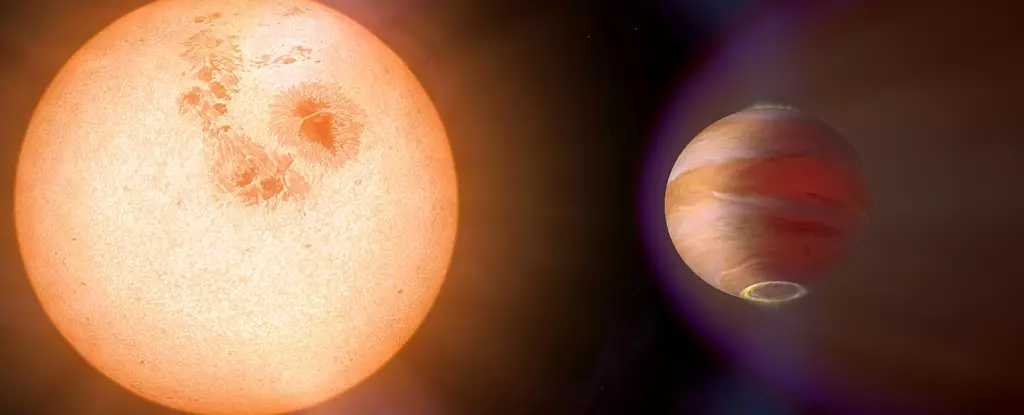Stellar metallicity, which refers to the abundance of elements heavier than hydrogen and helium in stars, provides invaluable insights into stellar formation, evolution, and the dynamics of galaxy formation. Recent advancements in observational astronomy have allowed researchers to measure metallicity with unprecedented precision. Through these methods, astronomers have studied co-natal stars—stars formed within the same giant molecular cloud (GMC)—to scrutinize their metallic compositions. It is generally assumed that stars emerging from the same stellar nursery should exhibit similar metallicity levels. However, new research reveals that some sibling stars contain significant discrepancies in their metallic content. This article delves into the intriguing findings that suggest rocky planets might play a critical role in this differentiation.
Co-natal stars are expected to have comparable chemical compositions since they originate from the same GMC. However, deviations in metallicity often indicate external influences or events that disrupt this expected uniformity. An insightful study titled “Metal pollution in Sun-like stars from destruction of ultra-short-period planets,” authored by Christopher E. O’Connor and Dong Lai, postulates that these metallicity discrepancies result from stars engulfing nearby rocky planets known as ultra-short-period (USP) planets. These planets, which closely orbit their parent stars, complete an orbit in mere hours and hold significant levels of metals, thus contributing to the stellar “pollution” observed.
Ultra-short-period planets are fascinating celestial bodies that sometimes bear resemblance to Earth in terms of their composition but have distinct orbits that bring them dangerously close to their host stars. These planets are rarely larger than two Earth radii and are often tidally locked to their stars due to their close proximity. Possessing molten surfaces as a result of intense stellar radiation, these planets exist in an extraordinary environment characterized by extreme temperatures. Their origins remain a topic of debate within the astronomical community; some hypotheses suggest they may have formed at greater distances and gradually migrated inward, while others propose they are remains of larger planets that have undergone significant atmospheric loss.
Despite the speculative nature of their origins, some statistics indicate that only about 0.5 percent of Sun-like stars host such planets. Yet, once a star engulfs one of these rocky bodies, a remarkable transformation occurs, leading to the aforementioned pollution of the star’s metallicity profile. O’Connor and Lai note that instances of planet destruction and engulfment could be a natural outcome of the dynamic evolution of planetary systems.
Mechanisms of Engulfment
The process by which these planets are engulfed by their stars can unfold through various mechanisms, primarily categorized into three main scenarios. The first scenario is high-eccentricity migration, where a protostar draws USP planets inward, changing their orbits from high eccentricity to a more circular path due to gravitational interactions. The second involves obliquity-driven migration, where companion planets exert influence on the USP’s orbit, leading to similar engulfment processes as they are pulled into their stars. Finally, dynamical interactions within systems, including planet-planet gravitational scattering, could also lead to the injection of rocky planets towards their stars.
Research indicates that around 3 to 30 percent of Sun-like stars may have engaged in the engulfment of rocky planets ranging between 1 to 10 Earth masses. O’Connor and Lai’s model suggests that engulfed USPs have a notable timescale—approximately 0.1 to 1 gigayear after their formation—indicating a predictable correlation between stellar pollution and the presence of compact, multi-planet systems.
The implications of this research extend beyond mere curiosity about stellar metallicity. If the engulfment of USPs is indeed a significant source of metallicity pollution in Sun-like stars, one might find a compelling correlation between star pollution and planetary system architecture. An intriguing forecast is that a specific percentage of polluted stars should host transiting planets with masses under 5 Earth masses and short orbital periods between 4 to 12 days. Additionally, O’Connor and Lai posit an anti-correlation between the occurrence of USPs and pollution levels, further substantiating their findings.
However, they caution against oversimplification of these results. Some events may cause metallicity signatures to fade over time, suggesting that current estimations could underestimate the pollution frequencies in Sun-like stars. Moreover, other mechanisms, such as the destruction of larger rocky planets or even gas giants, may contribute to the observed metallicity, albeit with limited influence.
The emerging connection between stellar metallicity and rocky planet engulfment presents exciting avenues for future research. O’Connor and Lai’s findings suggest a complex interplay between stellar formation and planetary destruction, thereby enhancing our understanding of cosmic evolution. Continued investigation is critical not merely to refine estimates of pollution rates but to deepen our comprehension of the intricate dynamics governing stars and their planetary systems. As our technology in observational astronomy advances, the potential to uncover more about these phenomena remains vast, awaiting further exploration and understanding.


Leave a Reply